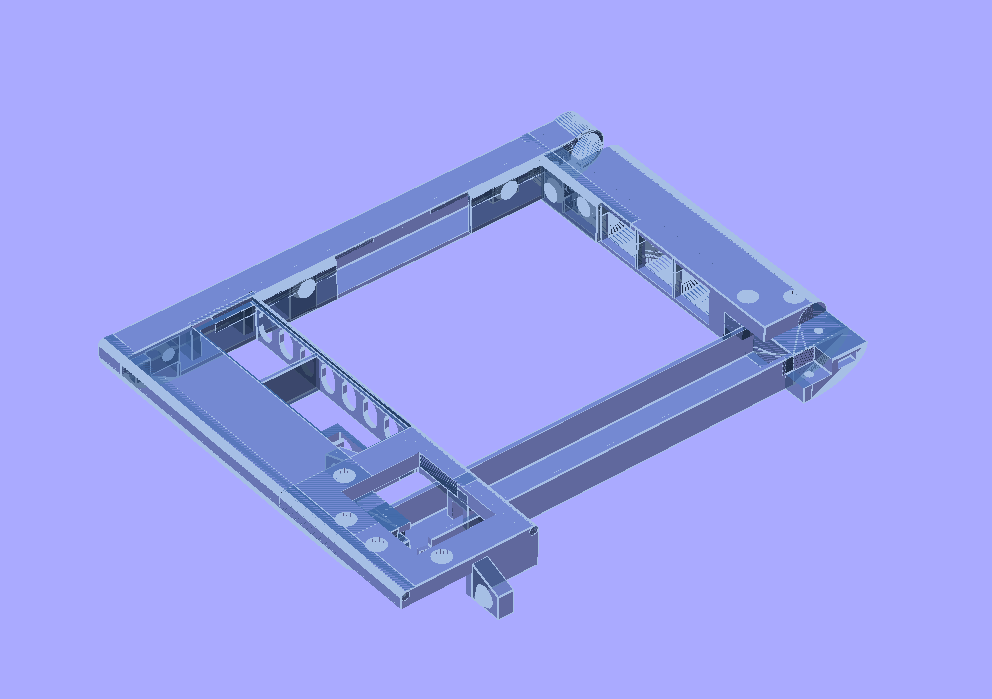14 May 2015: Progress report on casework base
The detail is starting to come together on the main base parts. Front centre of the picture below can be seen a holder for the touchpanel: this has two screws that lock into the front edge, and a "wing" with another screwhole for locking into the interior of the front edge. These three screws ensure that the front edge and touchpanel holder form a strong non-flexing unit. Slotting in between the touchpanel holder, front edge and end edges is a part known as "front keyboard tray", so named because it is a filler that will keep the keyboard in place, from the front. It's designed to have a small piece of bamboo laminate on top, and it helps support the lower (large) bamboo laminate that covers the entire left side from front to back, against which the PCB will sit, inside.
Towards the back of the "tray" is an extra piece sticking out that has a screwhole in it. The left edge of the "tray" is actually thicker than normal and fits inside the left edge by way of support. It cannot be seen from this side of the photo but there is a second screwhole which goes into the left end of the front edge. This screwhole and the support ensure that the left and front parts are secure and do not twist. If they twist, the plastic creaks very badly as the two parts grind against each other.
Yet to be done (on the list of "major details") is to put the hole for the EOMA68 CPU Card into the left edge. This will require beefing up the interior of the left edge because the outer wall of the left edge is part of the structural support. If a large chunk of that is removed (length 70mm) then the entire left edge is severely weakened. Fortunately, due to the PCB thickness, the EOMA68 CPU Card is expected to poke out through the middle of the left edge, meaning that under and over the CPU Card it will be possible to add significant strengthening. Prior tests have shown that a solid plastic bar of around 5mm x 10mm cross section can be amazingly strong.
So the design is coming together: the major parts are in place. It's now a matter of refinement - an iterative process of printing out the parts, assembling and then testing them. Soon it will be possible to begin printing out "real" 15in parts, where a new round of iterative development will begin, involving fitting the actual LCD, actual keyboard and actual touchpanel LCD parts.
